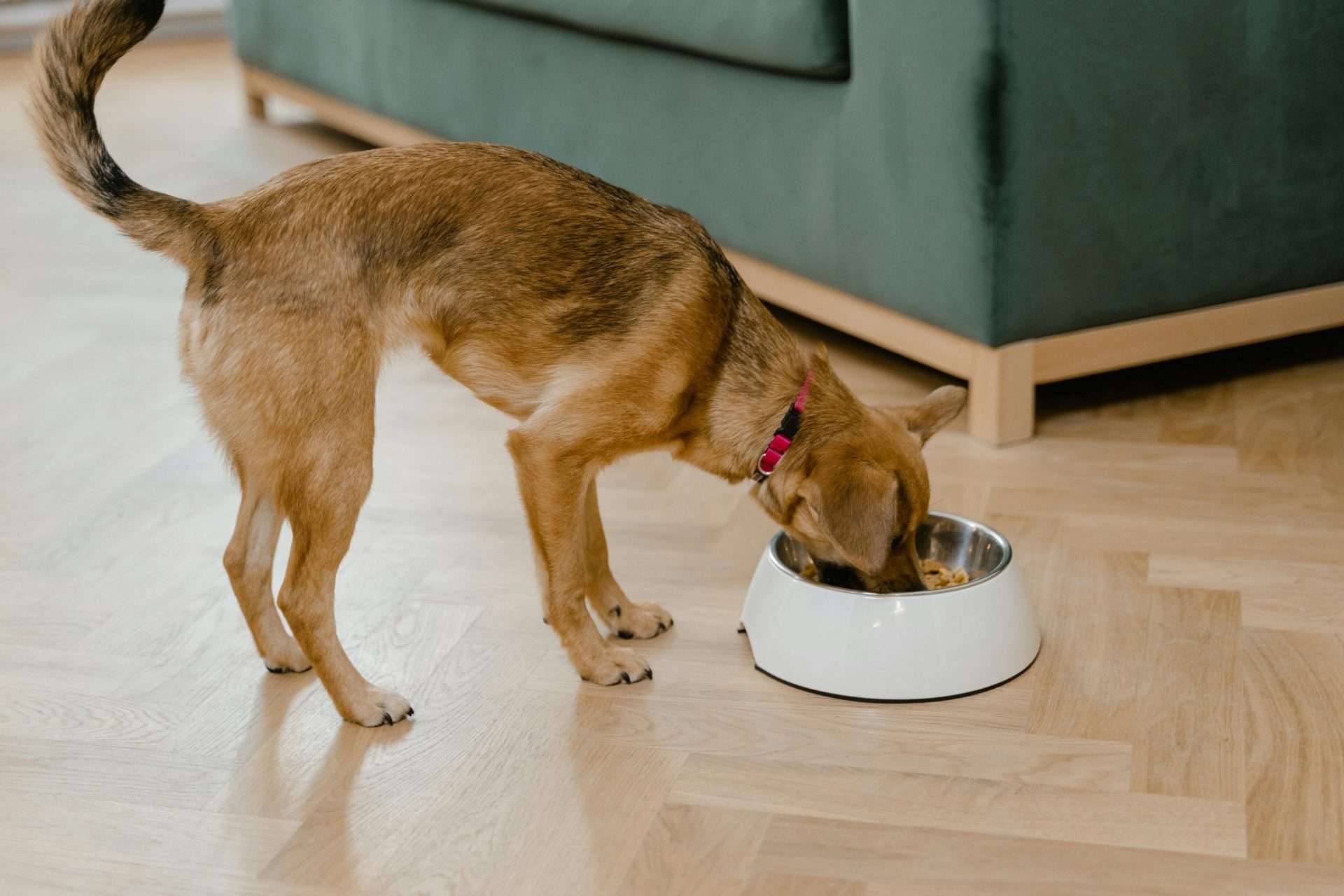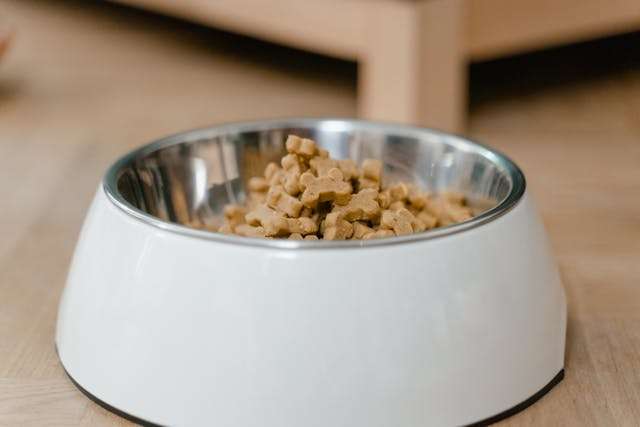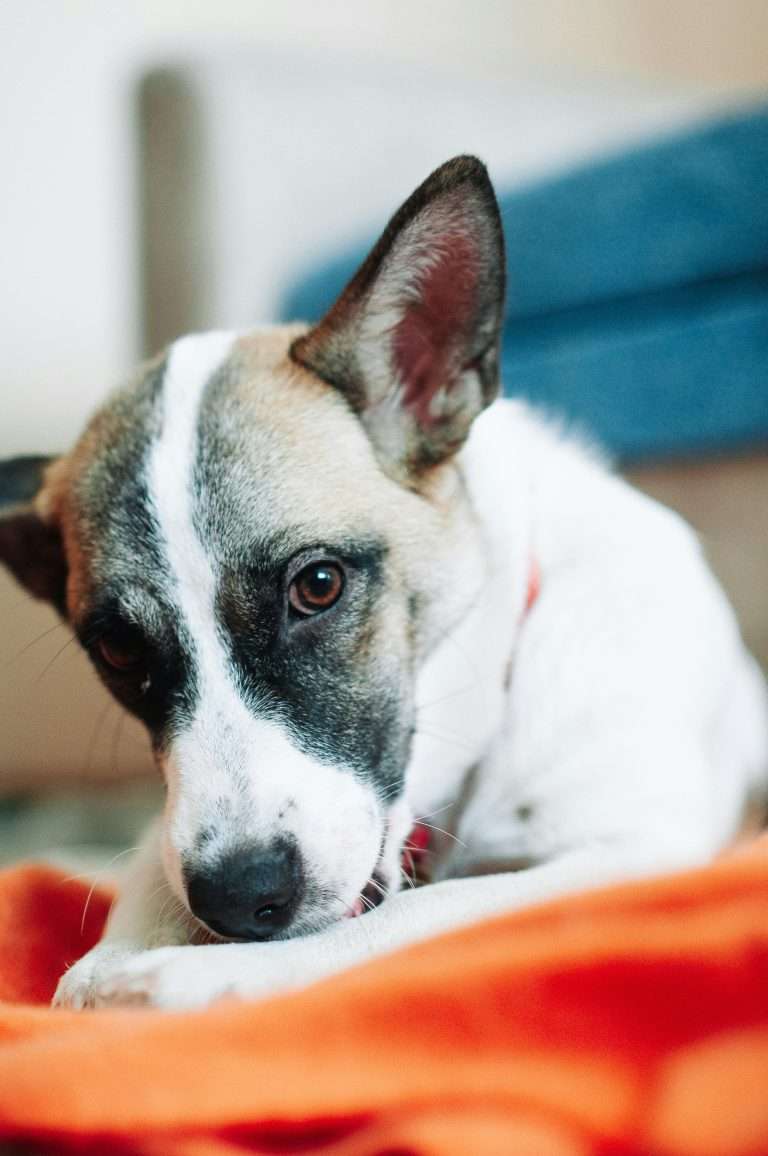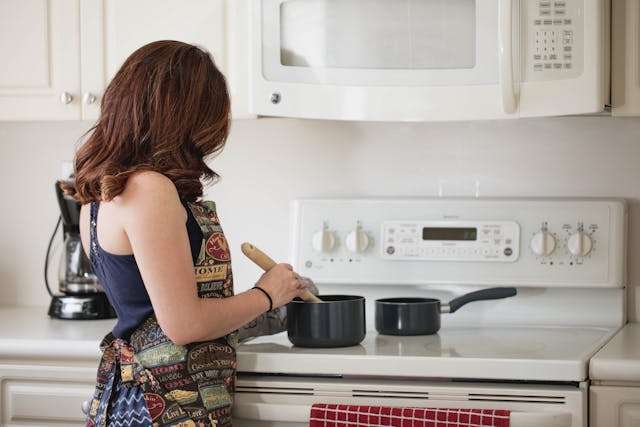What to Do When Your Dog Refuses to Eat
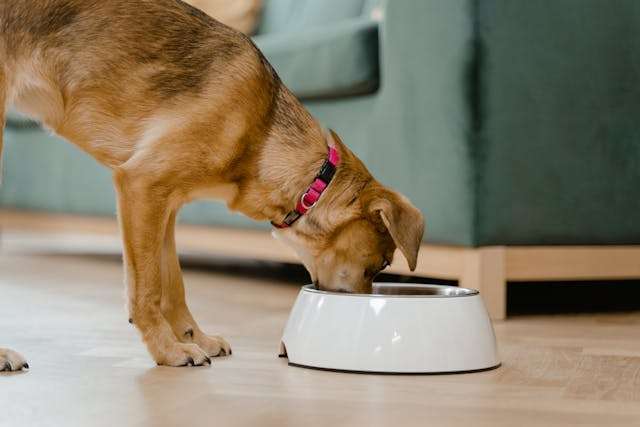
What to Do When Your Dog Refuses to Eat: Simple Solutions for Concerned Pet Owners. It’s always concerning when your dog refuses to eat, leaving you puzzled and worried about their health.
A lack of appetite can signal underlying problems that need attention, whether sudden or ongoing.
Fortunately, there are practical steps you can take to encourage healthy eating habits while ensuring your pup gets the care they need. Let’s explore solutions that are both simple and effective.
Key Takeaways
These takeaways will help any concerned pet parent address eating issues confidently, fostering a better mealtime relationship that keeps their dog happy and healthy.
Addressing the issue of a dog refusing to eat requires a mix of observation, practical adjustments, and sometimes professional intervention. Here are the essential takeaways to ensure your pup regains their appetite happily and healthily:
Table of Contents
Common Reasons Dogs Refuse to Eat
When your dog refuses to eat, it can be one of the most concerning situations for any pet owner. But like us, dogs can lose their appetite for various reasons— health problems, environmental stressors, and even personal tastes. Understanding these possibilities can help you quickly address the issue for your furry friend.
Health-Related Reasons
Health issues are often at the top of the list when a dog refuses to eat. Some of the most common culprits include:
Gastrointestinal Problems: Dogs experiencing an upset stomach, vomiting, or diarrhea may avoid food. Digestive issues can result from infections, eating something they shouldn’t, or more serious conditions like pancreatitis. If these symptoms persist for more than a day, it’s crucial to consult your veterinarian.
Dental Problems: Painful tooth decay, gum infections, or
fractured teeth can make chewing food difficult. Dogs won’t tell you they’re in pain—they mightstop eating. Check for signs like bad breath, drooling, or a reluctance to chew. A visit to the vet for a dental checkup can reveal underlying problems.
- Underlying Illnesses: Systemic diseases such as kidney failure, liver disease, or even cancer could be to blame. Occasionally, medications prescribed for these conditions can suppress appetite. If your dog has ongoing health concerns, consult your vet to rule out complications.
If you have any doubts about your dog’s health, don’t hesitate to seek professional help. Ignoring these signs can lead to worsening issues over time.
External guidance can help tackle medical concerns. WebMD’s article “Dog Not Eating? Possible Causes and Appetite Solutions” provides more insights.
Behavioral and Environmental Causes
Sometimes, the reasons behind a dog refusing to eat have more to do with their environment or emotional state than their physical health. Here are a few behavioral or environmental triggers:
Stress or Anxiety: Situations like moving to a new home, loud noises, or changes in household dynamics can trigger stress. This emotional discomfort may cause your dog to shy away from food.
Travel or Routine Disruptions: Dogs are creatures of habit. Anything that shifts their routine—like travel or a sudden change in mealtime—can make them uneasy and less inclined to eat.
Poor Feeding Environment: Some dogs are particular about where they eat. A noisy or chaotic space could discourage them from their bowl. Setting up a predictable, quiet feeding area can make a huge difference.
Try eliminating these stressors or retraining your dog with positive mealtime associations if possible. The key is to keep the feeding zone consistent, calm, and free of distractions.
For an in-depth read on how behavioral and environmental factors influence appetite, check out PetMD’s article “Why Is My Dog Not Eating? Causes and What to Do.”
Dietary Factors
Believe it or not, dogs can be as picky as humans regarding food. There are several reasons why your pup might turn their nose up at food that’s perfectly good (to you):
Food Doesn’t Appeal to Them: Maybe it’s the texture, the taste, or temperature. Dogs can become bored with the same old kibble all the time.
Expired or Spoiled Food: Dogs rely heavily on their sense of smell. If dog food is past its expiration date or has gone rancid, they’re unlikely to eat it. Always check the packaging and store food properly to maintain freshness.
Nutritional Imbalances: Poor-quality dog food without the right balance of nutrients could contribute to appetite loss. Dogs thrive on high-quality diets suited for their age, size, and specific needs.
If you suspect their food is the issue, try switching to a different brand or offering a mix of wet and dry food to see if that sparks their appetite. Be gradual with changes to avoid upsetting their stomach.
The Kennel Club’s article “Reasons Why My Dog Won’t Eat Their Food” offers important advice on improving your dog’s diet.
Understanding the reasons behind your dog’s appetite loss requires looking at the bigger picture—health, behavior, and diet. As you explore solutions, remember patience and careful observation go a long way. In the next section, let’s continue uncovering more ways to support your dog’s health and happiness.
Practical Solutions to Get Your Dog to Eat
It’s never easy to watch your dog push their food bowl away or stare at it as if it’s a chore. If your dog refuses to eat, it’s essential to get to the root of the issue quickly. Sometimes, making simple adjustments to their diet, mealtime routine, or food choices can make all the difference. Let’s explore a few straightforward and effective strategies.
Trying a Bland Diet
Introducing a bland diet is often the best initial step when your dog has an upset stomach. Boiled chicken and rice are popular go-tos because they are gentle on the stomach and easy to digest. These bland combinations can give your dog the nutritional support it needs while it recovers from mild tummy troubles.
Preparing the chicken without any seasoning or spices is essential since these can aggravate their stomachs further. Additionally, some dogs may benefit from specially formulated food for sensitive stomachs. Explore this guide on Best Dog Food for Sensitive Stomachs for more tailored solutions. Such options are designed to ease digestive issues while enticing their taste buds.
Incorporating Wet Food or Food Toppers
Adding wet food or toppers to their meals can be a game-changer if your dog needs encouragement. A splash of chicken broth (unsalted), a dollop of wet food, or a gravy explicitly designed for dogs can make even the blandest kibble more appealing. Food toppers not only enhance flavor and aroma but also provide additional nutrients.
Mix wet food into their dry kibble to create a texture they can’t resist. To maintain variety, some dog owners have succeeded with rotating toppers like fish, pumpkin, or natural yogurt. Need more ideas? Check out these Tips for Feeding Picky Eaters for inspiration to keep your dog interested in their meals.
Adjusting Meal Times and Environments
Sometimes, the problem isn’t the food—it’s the setting. Dogs thrive on routines, so feeding them at consistent times every day can create anticipation and encourage better eating habits. Consider setting clear, designated feeding times if your current schedule feels chaotic.
The environment can also play a huge role. Make sure their feeding area is calm, quiet, and free from distractions. Loud noises, interruptions, or hectic surroundings can make your dog anxious, reducing their willingness to eat. Think about creating a “dining zone” where your dog feels at ease, similar to how we sometimes prefer peace during a meal.
When to Consult a Vet

Photo by Tima Miroshnichenko
If your dog refuses to eat for more than a day or two, it might be time to consider the possibility of an underlying issue. Persistent refusal to eat should be taken seriously, especially if it’s paired with symptoms like lethargy, vomiting, or noticeable weight loss.
A veterinarian can assess your dog’s health and identify medical problems that might not be obvious. In some cases, there could be dental pain, gastrointestinal concerns, or even more serious illnesses requiring attention. It’s better to be safe than sorry—your vet is your best resource when refusal to eat becomes chronic or other worrying symptoms arise.
Addressing dogs’ lack of appetite requires patience and observation. These practical solutions often lead to improvements, but staying mindful of changes in your pup’s behavior is key to ensuring their continued health.
Savannah’s Story: Overcoming Feeding Challenges
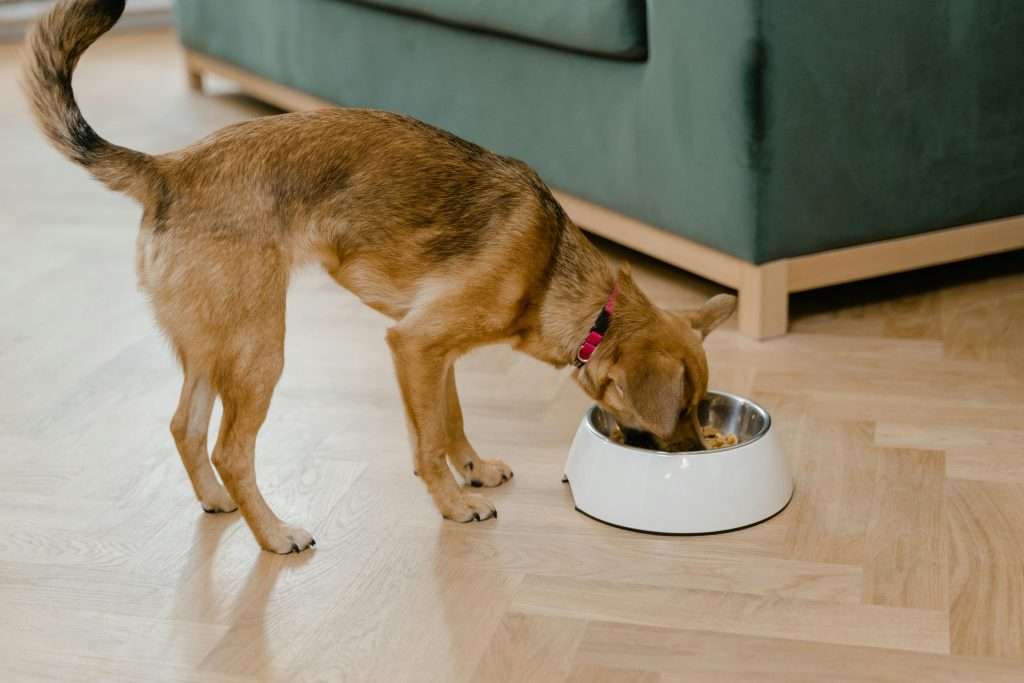
Every dog owner knows the heartbreak of seeing their beloved pet refuse to eat. This struggle hit home with Savannah, my sweet but stubborn Labrador mix. Her refusal to eat wasn’t just about picky tastes—it was a more profound challenge that required persistence, learning, and creativity. Here’s her story and what worked for us.
Identifying the Cause of Savannah’s Appetite Loss
The first step in tackling Savannah’s issue was determining why she wasn’t eating. Was it medical, behavioral, or diet-related? I started by observing her closely. Did she seem lethargic? Was she avoiding specific types of food?
After two days with no improvement, I consulted our vet, who ruled out serious health conditions. Savannah was feeling a combination of stress from a recent move and dissatisfaction with her usual food. Dogs, like people, can be affected by change, and sometimes, their meals just aren’t cutting it.
Minor but Effective Adjustments to Her Diet
I looked closely at her meals since medical concerns were off the table. Was it her kibble’s size, smell, or monotony? To test her preference, I:
Tried warm food: I poured a bit of warmed, unsalted chicken broth over her kibble. This simple switch made her meals infinitely more interesting. If you’re dealing with a similar situation, this article on Best Dog Food for Sensitive Stomachs offers helpful insights into gentle dietary changes.
- Rotated flavors: Dogs can get bored, just like humans. I introduced variety by using wet food toppers and occasionally mixing in proteins like plain boiled chicken or scrambled eggs
. The added aroma immediately caught her attention.
Creating a Stress-Free Mealtime Environment
Another crucial step was addressing Savannah’s stress levels. I noticed she wouldn’t eat if there were too much noise or activity nearby. Creating a quiet and calm “dining zone” became part of her routine, making her feel secure during mealtime.
Consistency also played a significant role. Feeding her daily at the exact times instructed her internal clock to anticipate meals, reigniting her appetite. Eliminating distractions during feeding time can be transformative for any dog parent.
Offering High-Value Treats as a Restart
When Savannah remained uninterested, I initially used high-value treats like small pieces of cheese or cooked, small meat portions to hand-feed her. Not only did this rekindle her trust in food, but it also reassured her that eating was a safe and rewarding activity. If your dog is going through something similar, this Tips for Feeding Picky Eaters list might be beneficial.
Patience and Observing Progress
The journey back to regular eating patterns wasn’t immediate. It took a combination of trial-and-error with her meals, careful environmental adjustments, and patience. Fortunately, I could identify what worked, and Savannah gradually returned to her usual, vibrant self.
Savannah’s feeding challenges weren’t just a bump in the road—they taught me to observe, adapt, and listen to her needs. Solutions are within reach if your dog is dealing with stress, environmental changes, or dietary preferences. Often, the most straightforward adjustments—like trying warm food or reducing stressors—can make all the difference.
Preventative Measures for Picky Eating
Picky eating might seem harmless initially, but it can lead to nutritional deficiencies and create unnecessary stress for you and your dog. However, with a few proactive steps, you can shape your dog’s eating habits and set them up for lifelong healthy mealtimes. Let’s dive into some practical strategies you can implement.
Establishing a Balanced Diet Early
The foundation of preventing picky eating lies in starting with a balanced diet. Much like us, dogs thrive on a plan that satisfies their nutritional needs and taste preferences. Introducing a variety of high-quality foods from the start, you help your dog develop a healthier relationship with mealtime.
A balanced meal should include:
- High-Quality Protein: This helps maintain muscle mass and overall strength.
- Healthy Fats: Essential for energy and a shiny coat.
- Vitamins and Minerals: Support immune health and organ function.
Regularly monitor your dog’s eating habits and adjust their food as they age or develop specific dietary needs. Tracking their preferences and health outcomes can help you identify what works best for them. You can find detailed guidance on starting a rich nutritional journey for your dog in these essential dog nutrition tips.
Additionally, creating set feeding routines and avoiding over-snacking ensures your dog doesn’t develop the habit of turning up its nose at meals. Stick to specific times and avoid leaving food out all day, as this can dull their interest in eating.
Meal Rotation Strategies
Just like humans, dogs can get bored when they eat the same meal day after day. Meal rotation is an excellent way to spark your dog’s interest in their food while ensuring they get diverse nutrients. This doesn’t mean overhauling their diet daily but introducing subtle changes when appropriate.
Here’s how you can rotate meals effectively:
- Switch Up Proteins: Alternate between chicken, fish, beef, and lamb to keep things interesting.
- Experiment with Textures: Combine kibble with wet food, or mix in steamed vegetables to create variety.
- Use Toppers: Adding tasty enhancements like bone broth or food toppers can improve texture and flavor. Check out these best dog food toppers for picky eaters to see what’s ideal for your pup.
The key here is to transition gradually. Sudden changes in diet can upset dogs’ stomachs, so always mix new foods into their current meals over the course of a week. And remember, every dog’s preference is different—trial and observation are essential.
Meal rotation also prevents your dog from developing nutrient gaps by allowing it to rely on the same food. Combining variety with balance ensures that your pup not only enjoys its meals but reaps long-term health benefits from a diverse diet.
Making these proactive changes can drastically reduce the chances of dealing with picky eating later. After all, consistency paired with creativity often leads to a happy, well-fed pup!
Conclusion
As a dog owner, seeing your furry friend refusing to eat is never easy. Whether it’s caused by health issues, stress, or a lack of interest in their food, knowing what steps to take can help you address the problem effectively. Let’s summarize the overarching solutions and insights you can rely on moving forward.
Understanding the reasons behind your dog’s loss of appetite is essential. It helps to start by observing their behavior closely—are there any changes in their energy levels, mood, or physical health? Identifying these signs early can guide your next steps, whether that means making dietary adjustments or consulting a veterinarian.
For a detailed dive into potential medical causes and actionable steps, consider exploring this PetMD guide on why your dog might not eat. It provides an in-depth explanation of common issues and when to seek veterinary help.
Quick Tips to Encourage Eating
Sometimes, simple solutions make a world of difference. If your dog is being a bit stubborn or experiencing mild aversions to their food, here are some ideas:
- Warm their food slightly to enhance the aroma.
- Add a dog-safe topper, such as unsalted chicken broth, to make meals more enticing.
- Stick to a routine by feeding your dog at consistent times each day to set their expectations.
- Create a serene mealtime environment that’s free from noise or disruptions.
For additional strategies and insights on encouraging your pup to eat, the tips shared by the American Kennel Club in its article “Why Won’t My Dog Eat?“ can further assist you.
When Professional Help is Necessary
While many appetite challenges can be resolved with patience and attention, there are times when a veterinarian’s expertise is essential. If your dog refuses to eat for more than a couple of days or shows other symptoms like lethargy, significant weight loss, or gastrointestinal issues, don’t delay seeking help.
You might find this article from Small Door Vet on what to do when your dog won’t eat helpful for understanding when it’s time to consult a professional and pinpoint deeper concerns.
Taking action right away, regardless of whether it’s a minor or major issue, ensures the well-being of your furry family member. The effort you put in now will improve your dog’s appetite and help them stay happy, energetic, and healthy in the long run.
FAQ: Common Questions About Dogs Refusing to Eat
If your dog refuses to eat, you may have many questions racing through your mind. And you’re not alone—it’s a common concern among pet owners. To clarify, here are answers to frequently asked questions surrounding this issue. These are straightforward insights to help guide you through this worrisome situation.
What Should I Do If My Dog Refuses to Eat?
First and foremost, stay calm. A temporary loss of appetite doesn’t necessarily mean a significant issue. Start with these initial steps:
- Observe Closely: Watch your dog for changes in behavior, physical symptoms, or other unusual patterns, such as lethargy or vomiting.
- Check Their Food: Ensure the food is fresh. Dogs have a keen sense of smell and won’t eat spoiled or rancid food.
- Try a Different Approach: Small adjustments may help, whether it’s adding water to make the food softer or offering bland, home-cooked chicken and rice.
- Seek Professional Advice: A veterinarian’s input is necessary if they haven’t eaten for more than 24-48 hours or show other concerning symptoms.
These straightforward actions often resolve the issue or reveal if further steps are needed. For more details about medical causes of appetite loss, check out WebMD’s article “Dog Not Eating? Possible Causes and Appetite Solutions.”
When Should I Contact a Veterinarian?
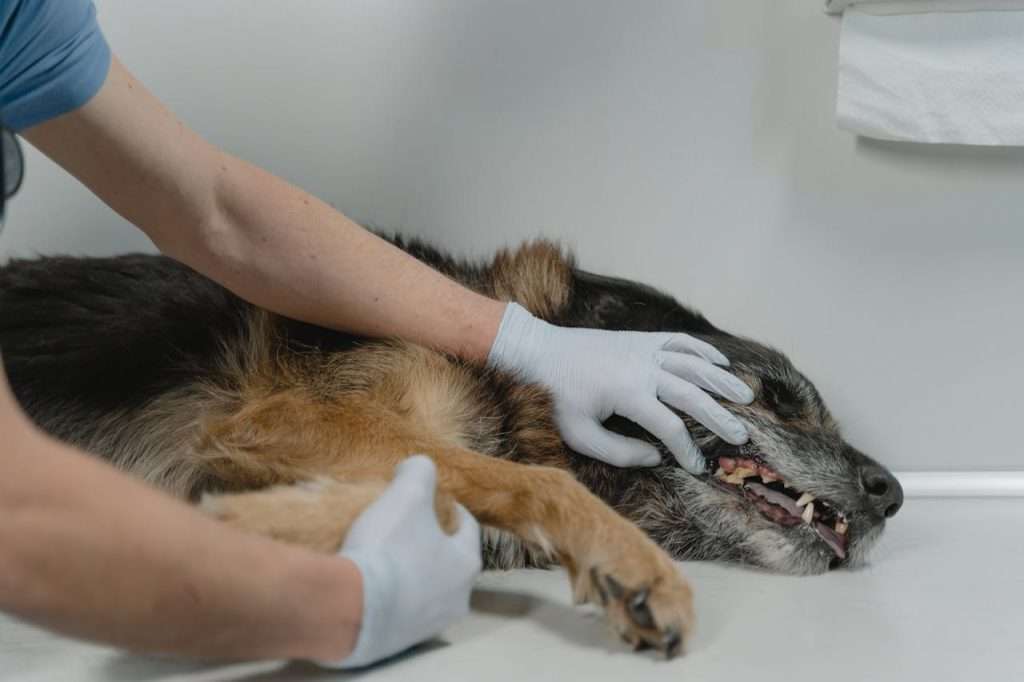
Photo by Tima Miroshnichenko
If your dog’s appetite loss continues, it’s best to err on caution. Call your vet if:
- They haven’t eaten for more than two days.
- They show symptoms like vomiting, diarrhea, or lethargy.
- There are signs of pain, such as whining or avoiding physical touch.
Unexplained loss of appetite can point to underlying issues like dental pain or gastrointestinal problems. More on this topic can be found in the AKC’s guide, Why Won’t My Dog Eat?.
Can Stress or Routine Changes Make My Dog Stop Eating?
Stress and disruptions to their usual routine can affect your dog’s eating habits. Some common triggers include:
- Moving to a new home.
- Introduction of new pets or family members.
- Loud noises (e.g., storms or fireworks).
Creating a consistent feeding routine and ensuring a peaceful mealtime environment often resolve these issues. If the stress continues, enrich their routine with calming activities or talk to your veterinarian for additional tips.
Should I Change My Dog’s Food?
Sometimes, dogs stop eating because they’re bored or dissatisfied with their food. Pay attention to their preferences:
- Taste and Temperature: Some dogs prefer slightly warm food to mimic fresh prey.
- Mixing Flavors and Textures: Chopping in some wet food or using a topper can make their meals more captivating.
- Food Quality: Ensure you’re feeding high-quality, vet-approved food suited to their breed, life stage, and activity level.
Gradual transitions minimize the risk of stomach issues when introducing new food.
Curious about how to pick a better diet for your picky eater? Explore our insights in Tips for Feeding Picky Eaters.
Why Won’t My Puppy Eat?
Puppies are active and curious, but a sudden refusal to eat can be concerning. Potential reasons include:
- Teething Pain: Chewing might be difficult if they’re cutting new teeth.
- Rapid Growth: They might go through appetite shifts as they grow.
- Health Concerns: Parasites or digestive issues may lead to a loss of interest in food.
Always consult your vet if you’re unsure about your puppy’s behavior. Quick action ensures that the puppy remains healthy during its critical growth stages.
Can Medical Issues Be the Cause?
Absolutely. Appetite loss is often related to health concerns such as:
- Dental Problems: Issues like gum disease or tooth pain can make eating uncomfortable.
- Systemic Illnesses: Conditions like kidney disease, liver issues, or infections can suppress a dog’s appetite.
- Medications: Some prescribed treatments may lead to temporary appetite changes.
If health problems are suspected, don’t delay contacting your vet. For additional reading, consider PetMD’s guide on Why Is My Dog Not Eating?.
My Dog Eats Grass—Is That Normal?
It’s not unusual for dogs to munch on grass occasionally. However, if they’re eating grass instead of food, it could indicate:
- A need to induce vomiting (possibly due to nausea or an upset stomach).
- Nutritional deficiencies, although rare.
If this behavior persists, consult your vet to rule out any underlying issues.
How Can I Prevent Feeding Problems in the Future?
Proactive care can prevent many appetite-related struggles. Here are a few suggestions:
- Feed high-quality food that meets your dog’s nutritional needs.
- Stick to a routine—consistency is comforting for dogs.
- Avoid overfeeding treats as it may spoil their appetite for regular meals.
- Regular check-ups with your vet ensure your dog stays healthy and identify issues early.
Look at our guide, Best Practices for Dog Nutrition, for more preventative strategies.
If your dog’s eating habits become a persistent challenge, you’re not alone—most pet owners face this at some point. The key is to stay informed, be patient, and seek help when necessary. Every dog has unique needs, and tuning into their cues allows you to find the best solution.
Recognizing the Reasons Behind Appetite Loss
When your dog refuses to eat, identifying the cause is the first step. By carefully observing your dog’s behavior, you might uncover clues about potential health conditions, environmental stressors, or even dissatisfaction with their diet. For a detailed understanding of possible medical reasons, check out WebMD’s article on Dog Not Eating? Possible Causes and Appetite Solutions.
Simple and Effective Solutions
Once you’ve assessed the potential reasons, implementing straightforward strategies can often make all the difference:
- Adjust the Environment: Ensure calm and quiet feeding areas to minimize stress.
- Switch or Enhance the Food: Add toppers, try wet food, or rotate proteins to maintain variety and stimulate interest.
- Stick to a Feeding Routine: Consistency can nurture meal anticipation and eagerness.
When to Seek Professional Help
If your dog continues to push away its food bowl for more than 24-48 hours, especially if paired with symptoms like vomiting or lethargy, don’t hesitate to contact a veterinarian. Persistent refusal may point to serious underlying issues. Learn more with PetMD’s article on Why Is My Dog Not Eating? Causes and What to Do.
Long-Term Strategies to Prevent Picky Eating
Building good habits early and maintaining variety in their diet can keep your pup engaged with mealtime over the long term. Rotational flavors and balanced nutrition are key to sustaining healthy eating habits. The Kennel Club’s insights on Reasons Why My Dog Won’t Eat Their Food offers tips to encourage better eating patterns.

